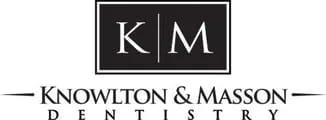Air abrasion is a drill-less technique that involves an instrument used to blast away small areas of early onset tooth decay, as well as help dentists perform other dental procedures. It is recommended for children or other patients who are fearful of traditional drilling. Air abrasion can only be used
Read more
-
Air Abrasion
Category: Technology
-
Anesthesia Wand
Category: Technology
The single-tooth anesthesia wand provides increased comfort and decreased anxiety when it comes to dental procedures requiring anesthetization. The wand looks like a small pen with an extremely small needle at the tip. The anesthesia wand works by numbing the individual tooth your dentist needs to work
Read more -
Cone Beam CT Imaging
Category: Technology
Cone beam CT imaging provides dentists with a three-dimensional view of mouth, jaw, teeth, and nasal cavity. These images contain invaluable clinical information and help reduce the need for invasive procedures, shorten treatment time, and make treatment plans more effective and efficient. With 3D scans,
Read more -
Digital Dental Impressions
Category: Technology
Dental impressions are bad enough to make anyone avoid the dentist. If you’ve ever needed a crown, bridge, or retainer, then you’ve experienced the discomfort that comes while waiting for the gooey, putty-like material (alginate) to set for a dental impression. Thankfully, there are new ways to obtain
Read more -
Digital X-Rays
Category: Technology
X-rays are one of the most important parts of a dental exam, and can help medical professionals detect problems long before they are visible to the naked eye, including early tooth decay, gum disease, abscesses, and abnormal growths. Benefits of Digital X-rays Easy to obtain Digital X-rays are obtained
Read more -
Intraoral Camera
Category: Technology
Slightly bigger than a pen, an intraoral camera is an innovative tool that can take up-close pictures of teeth, gums, and other hard-to-reach places in the mouth. Intraoral cameras can help dentists detect dental issues like tooth decay, periodontal disease, and oral cancers. Benefits of using an intraoral
Read more -
Laser Decay Diagnostics
Category: Technology
Using lasers, dentists can detect tooth decay that is not yet visible and would otherwise be undiagnosed using traditional methods. Laser cavity detection is based on the fact that healthy tooth structure reflects light, or “fluoresces,” differently than does decayed tooth structure. Teeth with decay
Read more -
Laser Dentistry
Category: Technology
Lasers direct a controlled force of energy that can remove or alter bone and tissue. By applying varying wavelengths of energy, dental lasers are used to detect and treat a myriad of oral health issues, including detecting oral cancer and treating small cavities. There are two different types of dental
Read more -
Same-Day Crowns
Category: Technology
A tooth that has been structurally damaged by decay or trauma sometimes needs to be crowned or “capped” so that it can look good and function properly again. A crown is a durable covering that is custom-made to fit over the entire tooth from the gum line up. Getting a crown used to mean multiple
Read more
Our Location
Find us on the map
Hours of Operation
Our Regular Schedule
Monday:
8:00 am-5:00 pm
Tuesday:
8:00 am-5:00 pm
Wednesday:
8:00 am-5:00 pm
Thursday:
8:00 am-5:00 pm
Friday:
Closed
Saturday:
Closed
Sunday:
Closed
